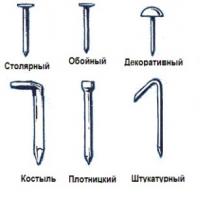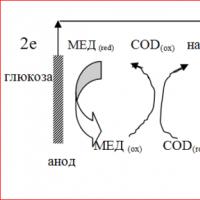What is the fuel consumption of the Mazda CX 5. Factors affecting the consumption of a crossover
A criterion such as efficiency is often the determining factor when choosing a car. The low fuel consumption of the Mazda CX-5 is due to the design of the SKYACTIV engine. The new power plant is capable of increasing the power of the vehicle without increasing fuel consumption. According to official data, the CX-5 model consumes up to 7.4 liters of fuel per 100 km. From this article you will find out whether the data specified in the technical documentation corresponds to reality, and how to make the crossover even more economical.
Fuel consumption for different trim levels
Fuel system model range CX-5 allows you to consume fuel without reducing technical characteristics car. The basis of the machine’s efficiency lies in its power unit. Let's find out what fuel consumption the Mazda CX-5 has depending on the configuration (data from the manufacturer).
Second generation crossover Mazda CX-5 2017-2019
| Equipment | Engine capacity, l. | Type of gearbox | Consumption, l. per 100 km | Type of fuel |
|---|---|---|---|---|
| Supreme | 2.0 | Machine | 6,7 | Gasoline AI 95 |
| Drive | Mechanics | 6,8 | ||
| Active | Machine | 6,9 | ||
| Supreme | 2.5 | 7,2 | ||
| Active | 7,4 |
Mazda CX-5 fuel consumption per 100 km (2014 restyling)
| Equipment | Engine capacity, l. | Type of gearbox | Consumption, l. per 100 km | Type of fuel |
|---|---|---|---|---|
| Active | 2.2 | Machine | 5,9 | Diesel |
| Supreme | 5,9 | |||
| Drive | 2.0 | Mechanics | 6,2 | Gasoline AI 95 |
| Active | Machine | 6,3 | ||
| Drive | 6,3 | |||
| Supreme | 6,7 | |||
| Supreme | 2.5 | 7,3 | ||
| Active+ | 7,3 |

First generation crossover (2011)
| Equipment | Engine capacity, l. | Type of gearbox | Consumption, l. per 100 km | Type of fuel |
|---|---|---|---|---|
| Active | 2.2 | Machine | 5,9 | Diesel |
| Supreme | 5,9 | |||
| Sendo | 2.0 | 6,0 | Gasoline AI 95 | |
| Drive | Mechanics | 6,2 | ||
| Active | Machine | 6,3 | ||
| Drive | 6,3 | |||
| Supreme | 6,7 | |||
| Supreme | 2.5 | 7,3 | ||
| Active+ | 7,3 |
As can be seen from the tables above, the fuel consumption of the Mazda CX-5 depends on the type of gearbox (automatic or manual) and engine size. The result is also influenced by the operating conditions of the car (air temperature and driving style).
Please note that the car brand provides the digital data indicated in the tables only for crossovers produced in Russia. Fuel consumption figures for other CX-5 trim levels supplied to the Japanese and European markets will differ.
What can cause overspending?
Each car owner can independently conduct an experiment and calculate the real consumption of a Mazda CX-5 per 100 km. To do this, you just need to take readings from the on-board computer while driving at average speed. After 100 kilometers of travel, it is necessary to compare the data obtained with the numbers in the documents and draw a conclusion. If the fact of overspending occurs, then you need to look for the cause of the problem. She may be hiding in:
- aggressive driving style;
- unbalancing of traction control systems, control of ride stabilization, stopping and restarting the engine in idle mode, regenerative braking;
- climate features (frequent temperature changes);
- malfunction of the Mazda CX-5 air flow sensor.
Use only high-quality fuels and lubricants, then the “appetite” of the car will not exceed the standards regulated by the manufacturer.

In the vehicle documentation, the manufacturer provides data on average fuel consumption per 100 km depending on different driving conditions:
Fuel consumption of the Mazda CX-5 (real) may differ slightly from that indicated in the passport. To find out the exact numbers, you should read reviews from CX 5 owners.
Actual consumption, owner reviews
Real indicators of consumption of fuels and lubricants are of more interest to potential buyers than the figures indicated in the technical documentation. Reviews from car owners will help you evaluate the actual fuel consumption of the Mazda CX-5. Having analyzed the data obtained as a result of the survey, we can present the consumption statistics of the Mazda CX-5 (we do not take diesel into account, since in our region such equipment is very rare).
When driving in urban conditions, using AI 98 and AI 95 gasoline, per 100 km of travel they spend:
For 100 km when driving on the highway, car owners spend:
Also, the “appetite” of a car depends on its technical condition, so systematic inspection and timely troubleshooting will help minimize the need for fuel and lubricants.
How to achieve lower fuel consumption
Even taking into account the fact that the highest consumption of the Mazda CX-5 (2.5) is only 7.4 liters, not all car owners are satisfied with this level of consumption. To reduce it, just follow a few useful recommendations:
- If possible, do not make unnecessary stops and give up an aggressive driving style;
- regularly contact service stations to check the serviceability of all systems;
- undergo computer diagnostics at least once a year;
- Monitor fuel filters and replace them regularly.
If you drive at the same speed without overloading the power plant, then its efficiency will increase.
Conclusion
The Japanese brand has worked hard to improve the engine for the CX-5 crossover. Usage new technology SKYACTIV made it possible to increase engine power without increasing fuel consumption. For efficient and economical operation of the power plant, the car owner should avoid overloads and change his driving style.

A purposeful, active and successful person in everything wants to always be on top in everything. The choice of car plays an important role here. When choosing a car, you still pay attention to the fuel consumption of the Mazda CX 5 per 100 km. After all, in the future you will have to travel long distances and spend money on fuel.
Fuel consumption is the first sign that the car will be economical for the owner and you won’t have to pay money for unforeseen gasoline costs. Mazda is a premium car. When released, manufacturers put forward many requirements for it, which it now meets. The Mazda crossover is designed for practical, smart and wealthy people.
| Engine | Consumption (highway) | Consumption (city) | Consumption (mixed cycle) |
| 2.0 6MT (petrol) | 5.3 l/100 km | 7.7 l/100 km | 6.2 l/100 km |
| 2.0 6AT (gasoline) | 5.4 l/100 km | 7.9 l/100 km | 6.3 l/100 km |
| 2.5 6AT (gasoline) | 6.1 l/100 km | 9.3 l/100 km | 7.3 l/100 km |
| 2.2 D 6AT (diesel) | 5.3 l/100 km | 7 l/100 km | 5.9 l/100 km |
| 2.0 6AT 4x4 (petrol) | 5.9 l/100 km | 8.2 l/100 km | 6.7 l/100 km |
Mazda specifications
To figure out what the average gasoline consumption is on a CX V, you need to know the engine size, type and other characteristics of the car.:
- the Japanese automaker released a family car in 2011 - Mazda CX 5, with a gasoline engine of 2.0 and 2.5 liters and a diesel engine of 2.0 AT;
- This car has the latest and most modern features, both in the interior and in the technical part;
- Mazda’s maximum acceleration is surprising – 205 km/h;
- Mazda CX 5 fuel consumption in the combined cycle is 6.3 liters per 100 kilometers. This is an ideal economical option for a premium car. Mazda's developments belong to Japan, Russia and Malaysia.
The five-door Mazda SUV of the K1 class can be equipped with a gas installation, and this will reduce fuel consumption several times. This car meets environmental standards, because it has a 2 liter engine with self-injection. It has up to 150 horsepower. A 6-speed gearbox is installed, very convenient and practical. The heating dynamics of the engine reaches the desired pressure in a few seconds. If you are interested in the question of fuel consumption of the Mazda CX 5, and you want to become a future Mazda owner, then the following information is for you.
Mazda fuel consumption
According to owner reviews, the Mazda CX 5 is an economical family crossover that can be driven on almost all roads, in any weather conditions. The actual fuel consumption of the Mazda CX 5 on the highway is 5.5 liters. With such a unique acceleration in a few seconds, and with an economical engine, you can travel not only around the country, but also safely go to neighboring countries.
Mazda CX 5 gasoline consumption in the city is about 7.5 liters, but here you need to take into account many factors that affect greater fuel consumption, which we will talk about later. The combined cycle shows the average gasoline consumption, Mazda CX 5 fuel consumption standards per 100 km are 5.9 liters.
If such indicators suit you, and you understand that you simply need such an SUV, then this car will make your trips easier. Will make them comfortable for you and your passengers. You will be able to get to any point in the city as quickly as possible with huge savings. Once behind the wheel, a Mazda owner will immediately feel confident and comfortable. But in order to ensure that the average cost of your car does not increase in the future, you need to understand what causes fuel consumption to increase and decrease, as well as what factors influence this.

What indicators influence increased fuel consumption?
Gasoline consumption in the Mazda CX 5 automatic is more gentle in comparison with previous models of cars of this brand. There are some problems that significantly increase fuel consumption:
- failure in the engine operating system;
- dirty fuel injectors;
- driving maneuverability;
- switching speed without taking into account the technical characteristics of the machine.
In urban areas, drivers are more attuned to car repairs and trips to service stations. Thanks to such service stations, it is possible to see or prevent a failure in the engine system, which will significantly improve its performance and also reduce fuel consumption.
Only at service stations is it possible to determine the condition of the fuel injectors, which play the most important role in gasoline consumption while driving.
If they are not in good condition, then they should be immediately replaced with new ones of the same brand. As for the maneuverability of the ride, the question is stark here, because many drivers will say that this is a fast, good SUV that you can drive at high speeds.
This is true, but it is necessary to choose gentle modes and speed switching points. So that the engine and its system have time to heat up and reconfigure for the necessary work.
How to reduce your gasoline use
Mazda itself is an economical version of a luxury car. In order for the CX 5 fuel consumption indicators to remain at the same levels, you must adhere to the following rules:
- moderate, quiet ride;
- regular visits to the maintenance service;
- monitor the condition of the engine and its system;
- every few years it is necessary for Mazda to undergo computer diagnostics;
- Change fuel filters promptly.
The Mazda SUV is truly designed for people who love speed. Do not confuse speed and constant changes in speed modes. That is, if you chose a speed of 300 km/h, then you need to drive like this for a long time. If the city is unfamiliar to you, and you don’t know what turns, what road, then choose a moderate driving mode.

Why do you need computer diagnostics?
Many owners think that modern premium cars do not need computer diagnostics; they are deeply mistaken. Very often, the CD helps to determine the fuel consumption of the Mazda CX 5, thanks to the data obtained as a result of the diagnosis.
Thanks to this method, you can determine the cause of any machine breakdown or identify it initially, before it makes itself felt. If you do not know how to determine the condition of the fuel injectors, which may be causing an increase in fuel consumption, then computer diagnostics will clearly provide data on their condition.
Does Mazda need a major overhaul?
Despite the fact that Mazda is a new generation car, it can also break down, fail, or turn from a comfortable car into an uncomfortable, noisy car. Timely repairs will help keep your car in good condition, and driving it will be a joy for you. If increased fuel consumption suits you, it does not mean that this is the normal state of the crossover. Mazda CX 5 is the embodiment of the dreams and desires of every driver. Therefore, in order for this car to serve you faithfully for a long time, visit the service station more often to make sure that there are no problems with the engine.
Can fuel consumption change with car mileage?
This question interests many. According to reviews from Mazda owners, it is clear that fuel consumption changes with mileage, or rather increases. In this case, it is recommended to immediately send the car for computer diagnostics.
Real reviews from owners about fuel consumption on the Mazda CX-5:
- I recently took out a loan to buy my first new car. While I was saving money for a year, I looked at almost all the car markets, not only in the city, but even on the Internet. I re-read a fairly large number of materials regarding the choice of car, but otherwise did not learn anything new. Almost everyone now writes that first of all it is important to pay attention to the fuel consumption of the car. I decided to follow the advice of many experienced drivers and eliminated all models with high fuel consumption. Of the remaining options, I liked the Mazda CX-5 the most. The rolling out of the car was successful, and it was time to check its fuel consumption. It turned out that the car is in the strong middle in terms of consumption. More precisely, fuel consumption is about 10-12 liters in an average cycle. These are acceptable indicators, especially for our time. In winter, the car behaves confidently, and fuel consumption rises only slightly due to engine warming up. The stove does not increase fuel consumption, as well as overloading the interior and trunk. In fact, I am completely satisfied with the car.
Dmitry Yelets:
- Buying a car is easy, but finding a suitable model that would become an assistant in the future and not a complete disappointment is quite difficult. One has only to imagine that a car will, for example, consume about 15 liters per hundred kilometers. I’m not just talking about this, because after purchasing the Mazda Cx-5 model, I really ran into this very problem, or rather, with colossal fuel consumption. Yes, indeed, this car consumes about 15 liters per hundred kilometers, taking into account traffic jams and bad weather. That is, this is its maximum. When there are no complications on the road, consumption drops to 14 liters. The difference is not too big, but refilling is noticeably more affordable. This car was a complete disappointment for me. Outside the city, you only manage to drive to your heart's content, since here the consumption drops to 9 liters, and the needle on the gas tank sensor no longer drops so noticeably. This car is not recommended to anyone who wants to save their money.
Evgeny Voronezh:
- Cars are different. Some differ in cost, others have different engine power, but others may differ in fuel consumption. Recently, fuel consumption has become almost one of the most important criteria when choosing a car. Many people have difficulties financially, so this is not surprising. I am one of those people who primarily save money on a car. Therefore, before purchasing a new car, I studied the local market well. I found a suitable car with a fuel consumption of 12 liters per hundred kilometers. This is a Mazda CX-5. After the purchase, in fact, my opinion has not changed. The car is really a solid four. There are minor shortcomings with the Mazda Cx-5, but they do not relate to fuel consumption. In this category, everything is just fine. Consumption has not increased over the course of a year, which indicates the stability of fuel consumption and the quality of the fuel and propulsion system.
The popular Mazda CX 5 crossover model was equipped with four powertrain options - two gasoline engines, 2 and 2.5 liters, and the same number of turbodiesels, 2.2 liters, but with different power (150 and 175 hp). Each of these power unit models has its own fuel consumption indicators - figures that are quite important for any motorist. And in this case, they are also important for the company that has relied specifically on fuel consumption. After all, the CX-5 crossover is presented by the manufacturer as one of the most economical cars in its class.
Fuel consumption indicators for different engine versions
The consumption of gasoline or diesel fuel largely depends on the car engine. Thus, the fuel consumption figures of a Mazda CX-5 with a two-liter engine should not exceed 8–8.1 liters in city mode. On the highway, a car with the same power unit spends about 6 liters per 100 km, while developing a speed of up to 187 km/h.

Modifications with a diesel engine with a performance ranging from 150–175 hp. pp., also have good dynamic characteristics. With a mass of almost 1.7 tons, such a car is capable of accelerating to hundreds in just 9.4 seconds and reaching speeds of up to 194 km/h.
A car with a 2.5-liter power unit, the performance of which can reach 192–194 hp. s., also shows good performance for its class - 194 km/h and 9 seconds to accelerate to hundreds. Moreover, the crossover’s gasoline consumption is not so high – the manufacturer indicates figures of only 6.1–9.3 liters per 100 km.
Table 1. Average fuel consumption figures for the CX-5.
Meanwhile, real fuel consumption indicators may differ significantly from the passport characteristics. This shows that most cars do not operate under ideal conditions. And as evidence of the discrepancy in numbers, one can cite reviews from crossover owners.

Fuel consumption calculator
Reviews of real fuel consumption
Most motorists who have managed to purchase the CX-5 crossover still have a definite opinion about its performance. One of these figures is the consumption of gasoline or diesel fuel (depending on the engine option). And it depends not only on the engine, but also on the driving style of the vehicle owner, and even on the time of year.
Table 2. Consumer reviews.
| Name and place of residence of the car owner | Engine and gearbox type | Consumption indicators,
l/100 km |
Review text |
| Andrey, Saint Petersburg |
2 l, automatic transmission | 6,5–10,4 | When buying a car, I chose between the CX-5 and Rav4. I made a choice in favor of Mazda, and still don’t regret it. Moreover, in addition to a considerable number of advantages, the car also has low fuel consumption. In winter I spend up to 10.4 liters, in summer in the city - up to 9 liters. On the highway in the warm season, consumption figures do not even reach 7 liters. |
| Nikolay, | 2.2 d, automatic | 8–13,5 | After 2 years of owning the car, I was pleased with many of its characteristics. The only “but” is that the model, which is not accustomed to domestic diesel fuel, consumes too much fuel. Especially in the cold season, when the figure reaches 13 liters. Because of this, you have to visit gas stations much more often than you would like. |
| Marina, Sevastopol |
2.0 l, “automatic” | 7–15 | A very gluttonous car. In the city, especially during rush hour, I constantly notice a gasoline consumption figure of 13–15 liters. Outside a populated area, especially if the road is flat, consumption drops sharply - sometimes to 8 liters, and in some cases even to seven. |
| Sergey, Voronezh | 2.5 l, automatic transmission | 8–10,5 | I can't say anything bad about the fuel consumption of my crossover. What 8 or 9 liters can be with the air conditioning on and in “city” mode? I consider the normal figure to be 10–11 liters. Moreover, outside the city, when the speed rises to 80–100 km/h, the figure drops to only 8 liters. |
| Basil, | 2.2, diesel, automatic | 5,5–9 | I chose a diesel SUV for its fuel consumption performance. I was not disappointed - on the highway the car spends about 5.5 liters. And only within populated areas, especially at traffic lights, you have to spend up to 9 liters of diesel fuel. But it’s not that much, and it’s still more profitable than driving on gasoline. |
| Eugene, Rostov-on-Don |
2.0, automatic transmission | 6,8–12,6 | When buying a brand new Mazda 5 2 in 2014, I was counting on low fuel consumption. In some ways, expectations were justified - on country roads the car drives with a consumption of no more than 6.8–7 liters. Within the city limits it already spends 12–12.6 liters. |
| Alexei, Nizhny Novgorod |
2.5 l, automatic transmission | 7,3–12 | Model 2015 spends about 12 liters when commuting two years after purchase. If we travel with our family out of town, we can count on consumption one and a half times lower. Sometimes I even noticed such a figure as 7.3 liters. |
Factors affecting crossover consumption
On average, the fuel consumption of a crossover is not that great. These values would be much more serious for similar vehicles of other brands. And, if you compare the numbers of diesel engines, taking into account the price of diesel fuel, the CX-5 can be called a completely economical vehicle. However, if such figures still do not suit the car owner, who mainly drives in city mode, you should be aware of the factors on which fuel consumption also depends:
- problems in the operation of the power unit - a wearing motor spends more consumables (including fuel and lubricant);

- contamination of fuel injectors, which reduces engine efficiency;
- vehicle driving mode - the more often the driver stops or changes travel parameters (braking or accelerating), the higher the consumption;
- extreme travel conditions - too low or, conversely, high speeds.

Experienced drivers have long known the dependence of consumption on the technical condition of the vehicle. Therefore, they try to change injectors on time and prefer to drive outside the city at a speed of at least 90–100 km/h. Moreover, the fairly fast CX-5 model allows you to drive much faster. There are other methods for reducing costs and, accordingly, the cost of car maintenance.
Ways to reduce fuel consumption
Despite the fact that the crossover is a fairly economical vehicle, its consumption of gasoline or diesel fuel does not suit all owners. And in order to make the fuel consumption of the Mazda CX 5 even more profitable, you should adhere to the following recommendations:
- try to drive more calmly, without unnecessary accelerations and stops. First of all, this applies to long sections without traffic lights and intersections for the city and any flat roads outside populated areas;

- periodically visit a service station to check engine performance;
- undergo computer diagnostics every few years;
- Change fuel filters regularly, following the recommendations for replacement - that is, approximately once every 30 thousand kilometers.
Driving at a constant speed is one of the best ways to save fuel. However, no car can be brought to minimum consumption levels if its engine is worn out and requires major repairs. It is worth carrying out such work, after first making sure that there is a problem, by contacting car service specialists.
Car diagnostics and overhaul as ways to reduce consumption
Even the fact that the Mazda SCH-5 can be classified as a premium crossover does not relieve the car owner from periodic computer diagnostics. With the help of such a check, not only machine breakdowns are determined, but also fuel consumption is calculated - and, in most cases, their cause is identified. By refusing diagnostics, the driver may find that more and more gasoline or diesel fuel is being spent, engine noise is increasing, and vehicle performance is decreasing.

By keeping your vehicle in good condition, you can save money on more than just fuel. Careful handling of the CX-5, like any other vehicle, will extend the life of most of its components. This means it reduces the cost of both fuel and the purchase of new parts and consumables.
Mazda CX 5: fuel consumption figures
updated: October 4, 2017 by: dimajpMany potential buyers want to purchase a prestigious and at the same time reliable, economical car. Efficiency means not only the cost of maintenance or repair, but also what fuel consumption the Mazda CX 5 will have per 100 km. As a rule, a car is purchased for travel, including long distances, so the cost of purchasing fuel will be of primary interest to the owner. Mazda CX 5 fully meets the stated requirements.
This model appeared on the automobile markets in 2011. The manufacturer paid great attention to reducing the weight of the car, but at the same time maintaining high levels of safety, reliability and vehicle dynamics. The production of this car model has been launched in Russia. Previously, the “five” could only be found in one generation, but in 2014 it was restyled. In 2017, production of second-generation cars began.
Official fuel consumption data for the Mazda CX 5
The manufacturer determines standard indicators for the consumption of gasoline or diesel fuel experimentally; for this purpose, the car is driven for some time on specially prepared tracks. The obtained data is indicated in the vehicle operating instructions. For an engine running on SKYACTIV-G 2.0 gasoline, the consumption should be as follows:
- When traveling within the city, you will need 8 liters of gasoline for trips over a distance of 100 km.
- On country roads, consumption will drop to 4.8 l/100 km.
- For a mixed cycle of vehicle movement, 6 l/100 km will be required.
A power unit that requires diesel fuel has a higher appetite. On the highway he will need 5 l/100 km, in the city already 8.5 l/100 km, in mixed trips he will need 6.3 liters of diesel fuel per hundred kilometers. These are the official data of the manufacturer. Fuel consumption largely depends on the type of transmission of the car, which can be mechanical or automatic. Also, the drive can be on the front wheels or full, on both axles.
It is rightly considered that the most economical Mazda CX 5 is a car with front-wheel drive and a manual transmission. Its two-liter engine will consume 5.2 liters, 7.7 liters, 6.3 liters on the highway, in the city and in the combined cycle, respectively. For cars with automatic transmission, about 0.5 liters more will be required.
Car manufacturers confidently claim that these consumption figures are quite accurate. If in reality they differ greatly, you should immediately pay attention to the technical condition of the vehicle.
First generation 2011-2015
The cars had power units running on gasoline and diesel fuel, and gasoline units were produced in several modifications. It is possible to squeeze out 150, 155 and 165 horses from two-liter gasoline power units. The engines were equipped with two types of gearboxes, one of them was robotic, and the second was manual.
Both types of boxes had six steps. Wheel drive could be full or only front-wheel drive. The maximum speed for these models was limited to 200 km/h. Mazda CX 5 gasoline consumption ranged from 6.1 to 6.7 liters with a range of 100 km.
The more powerful petrol power unit had a working volume of 2500 cm3, while the developed power was equal to 192 “horses”. The engine was equipped only with an automatic transmission. Wheel drive could be full or only on the front axle. The car's dynamics have been improved, but fuel costs have increased.
Fuel consumption increased to approximately 7.4 liters per hundred kilometers. The engines running on diesel fuel had a working volume of 2200 cm3. They could develop 150 or 175 hp. The type of transmission or drive had no restrictions, and consumed diesel fuel from 5.2 to 5.8 l/100 km.
Restyling of the first generation in 2015
2015 was marked by the fact that buyers saw the restyled Mazda CX 5, in which some design and other changes were made. Most of them concerned the vehicle's configuration. Thus, 2.5-liter engines became the basic ones, which began to be equipped only with robotic gearboxes, and wheel drive was only all-wheel drive. Diesel engines with a capacity of 175 horsepower also received the same changes.
The remaining powertrain options remain the same. Feedback from owners of such cars about fuel consumption shows that it has remained virtually unchanged.
Second generation Mazda CX 5
The coming 2017 will be remembered for the appearance of the second generation Mazda CX 5. The company's designers did not leave the design of the car, as well as the power units and transmission, unchanged. The buyer is offered a petrol version of the power unit with a displacement of 2.0 or 2.5 liters. The first can develop a power of 155 horses, the second produces 184 or 190 hp.
The Mazda CX 5 with a two-liter engine is available only with front-wheel drive. For an engine with 184 horsepower, the drive is full, and for 190 horsepower, rotation is transmitted only to the front wheels.
Fuel consumption for 2.5 liter power units is in the range of 6.2-6.5 l/100 km. Innovations also affected diesel engine options. Manufacturers have left only one type of engine, the one that can produce 175 horses.
The buyer could choose two types of drive, full or front-wheel drive. The gearbox chosen for all options was robotic, which had six gear selection stages. This power unit consumes approximately 5.1 liters of diesel fuel when covering 100 km.
Reviews from Mazda CX 5 owners
A car of this brand is considered a prestigious model; many Mazda CX 5 owners are satisfied with their purchase. The car meets almost all the requirements set by future owners. Among the many advantages of this model, the most often noted is very acceptable fuel consumption.
You can also find a number of reviews about the large “appetite” of the vehicle, but according to experts, this is mostly due to the way the car is driven and problems with the technical condition of the car.
Mazda CX 5 with engine 2.0 150 2wd 4wd
- Sergey from Voronezh. I purchased a two-liter Mazda CX 5 at a car dealership. When choosing, the option of purchasing a RAV 4 was considered, but after a detailed review I settled on a Mazda. I had to use the car in a variety of conditions. Consumption in the city does not exceed 8.7 l/100 km, on the highway does not exceed 6.4. In winter, up to 10 liters had to be burned.
- Dmitry from St. Petersburg. I own a two-liter Mazda CX 5 with an automatic transmission, and I’m offended by the car’s too much appetite when driving in the city. Sometimes it takes up to 15 liters, but on the highway it drops to 7 liters, sometimes even less. This largely depends on the driving style of the car.
With 2.2l engine 175 hp diesel
- Alexander from Tver. Before this car, I drove cars with gasoline engines. I decided to switch to diesel fuel and chose Mazda. Diesel fuel consumption largely depends on the driving style of the car, as well as the quality of the purchased fuel. At high speeds, its consumption can be within 13 l/10 km, in the city it does not exceed 8 liters.
- Svetlana from Kemerovo. I bought the car a little over one year ago. Somewhat disappointed with the sound insulation of the body. I only have my car serviced by specialists and no problems have been found so far. As for fuel consumption, I can say that it is acceptable. In urban conditions it is within 10 liters, and on the highway it drops to 10 l/100 km.
With 2.5 petrol engine 192 hp
- Nikolay from Moscow. I gravitate toward powerful engines, so I settled on a 150-horsepower power unit. When driving around the city with the air conditioning on in the summer, fuel consumption was approximately a little more than 10 liters per hundred kilometers. On the highway, if you don’t press the gas pedal too hard, you will need no more than 7 l/100 km.
- Vasily from Tomsk. I purchased a 2.5 liter SUV in 2015. For some reason, I can’t reduce my consumption in the city to less than 11 l/100 km. In the summer it’s not very hot here, I don’t use air conditioning, but the consumption is high. On the highways it is within 8-9 liters per hundred, this, in my opinion, is actually the ideal real consumption. While I only changed consumables, there were no more problems.
Ways to reduce fuel consumption
Today, fuel at gas stations is becoming more expensive, following the cost of oil. Owners want to achieve a reduction in consumption, so it will be useful for them to be reminded of what leads to excessive fuel consumption when operating the car:
- technical condition of the vehicle;
- car driving style;
- low technical condition of the power unit;
- Tire pressure does not meet manufacturer's recommendations.
Monitor the condition of the car as a whole, give up an aggressive driving style, use only high-quality fuel and the car will please you for a long time.
 Are there mites in Pitsunda? Ticks in Abkhazia. Pitsunda pine grove
Are there mites in Pitsunda? Ticks in Abkhazia. Pitsunda pine grove Red viburnum (Viburnum opulus L
Red viburnum (Viburnum opulus L Nail Making Business How to Make Copper Nails
Nail Making Business How to Make Copper Nails Stone brazier: material features and manufacturing options
Stone brazier: material features and manufacturing options Blackroot medicinal cultivation
Blackroot medicinal cultivation Fuel cells: a glimpse into the future
Fuel cells: a glimpse into the future Houses with a hipped roof projects
Houses with a hipped roof projects